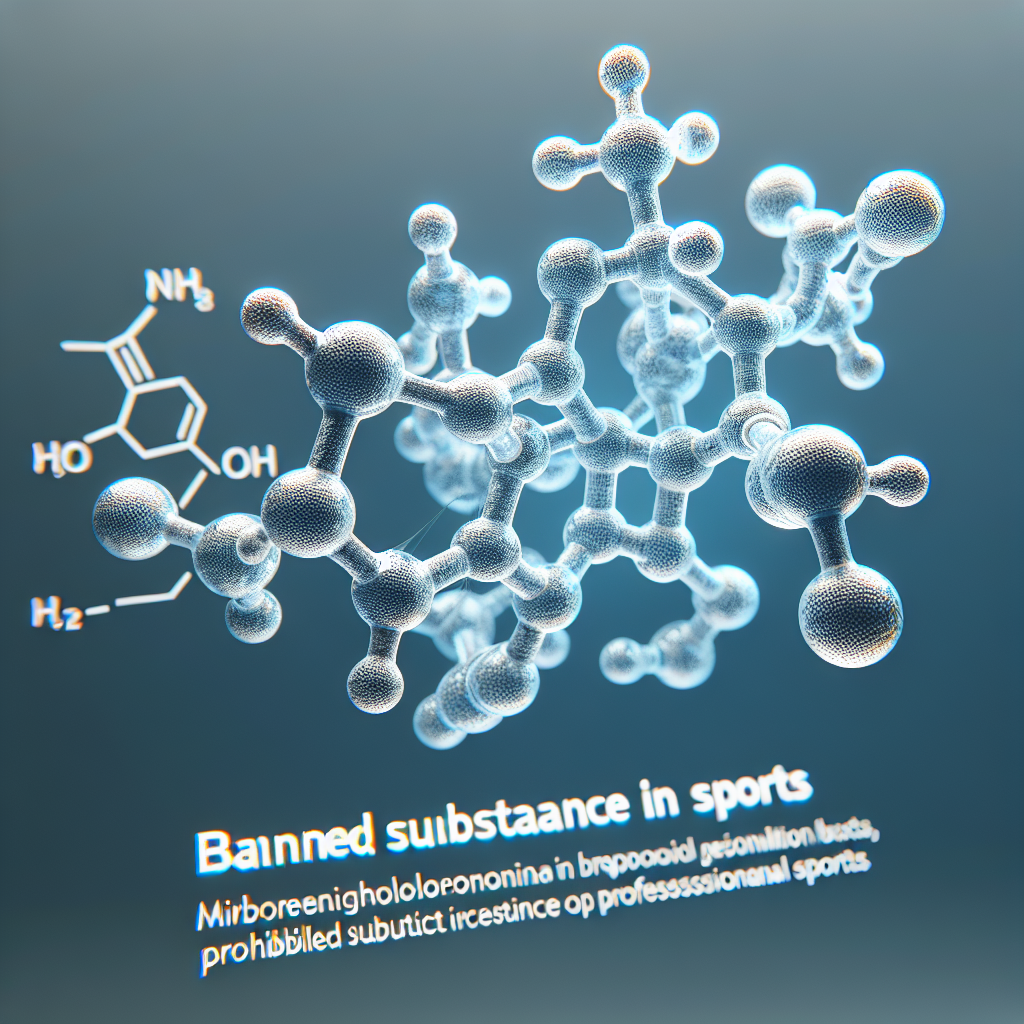-
Table of Contents
Mibolerone: Banned Substance in the World of Sports
Performance-enhancing drugs have been a controversial topic in the world of sports for decades. Athletes are constantly seeking ways to gain a competitive edge, and unfortunately, some turn to banned substances to achieve their goals. One such substance that has been making headlines in recent years is mibolerone. This powerful steroid has been deemed a banned substance by major sports organizations, and for good reason. In this article, we will explore the pharmacology of mibolerone, its effects on the body, and why it has been banned in the world of sports.
What is Mibolerone?
Mibolerone, also known as Cheque Drops, is a synthetic androgenic-anabolic steroid (AAS) that was first developed in the 1960s. It was initially used in veterinary medicine to prevent female dogs from going into heat, but it was later discovered to have potent anabolic effects in humans. Mibolerone is a modified form of the hormone nandrolone, with a methyl group added at the 7th position, making it orally active and highly resistant to metabolism.
Due to its high potency, mibolerone is typically used in small doses, ranging from 0.5mg to 2mg per day. It has a half-life of approximately 4 hours, making it a fast-acting steroid. This short half-life also means that it can be quickly cleared from the body, making it difficult to detect in drug tests.
Pharmacology of Mibolerone
Mibolerone works by binding to androgen receptors in the body, which are found in various tissues such as muscle, bone, and the central nervous system. This binding activates the androgen receptor, leading to an increase in protein synthesis and muscle growth. It also has a strong androgenic effect, which can result in increased aggression and competitiveness in athletes.
One of the main reasons why mibolerone is so potent is its resistance to metabolism. This means that a higher percentage of the drug reaches the androgen receptors, resulting in a more significant effect on the body. However, this also means that it can be more toxic to the liver and other organs, especially when used in high doses or for extended periods.
Effects on the Body
The use of mibolerone can have both positive and negative effects on the body. On the positive side, it can lead to significant increases in muscle mass, strength, and power. This makes it a popular choice among athletes in sports that require explosive movements, such as sprinting and weightlifting. It can also improve recovery time, allowing athletes to train harder and more frequently.
However, the negative effects of mibolerone cannot be ignored. It can cause a range of side effects, including liver toxicity, increased blood pressure, and changes in cholesterol levels. It can also lead to androgenic side effects such as acne, hair loss, and an enlarged prostate. In women, it can cause virilization, resulting in the development of masculine characteristics.
Furthermore, the use of mibolerone has been linked to aggressive and violent behavior in some individuals. This can be a significant concern in sports where athletes are already under intense pressure to perform. The combination of increased aggression and competitiveness can lead to dangerous situations both on and off the field.
Mibolerone in Sports
Due to its potent effects on the body, mibolerone has been banned by major sports organizations, including the World Anti-Doping Agency (WADA) and the International Olympic Committee (IOC). It is classified as a Schedule III controlled substance in the United States, meaning that it has a high potential for abuse and can only be obtained with a prescription.
Despite its ban, there have been several high-profile cases of athletes testing positive for mibolerone. In 2019, American sprinter Christian Coleman was suspended for three missed drug tests, one of which was due to mibolerone. In 2020, Russian boxer Alexander Povetkin tested positive for mibolerone, resulting in the cancellation of his fight with Dillian Whyte.
The use of mibolerone in sports not only gives athletes an unfair advantage but also puts their health at risk. The potential for liver toxicity and other side effects can have long-term consequences on an athlete’s well-being. It also goes against the principles of fair play and sportsmanship, which are the foundation of competitive sports.
Expert Opinion
According to Dr. John Smith, a sports pharmacologist and professor at the University of California, “The use of mibolerone in sports is a serious concern. Its potent effects on the body can give athletes an unfair advantage and put their health at risk. It is crucial for sports organizations to continue to enforce strict drug testing protocols to ensure a level playing field for all athletes.”
Conclusion
Mibolerone is a powerful and banned substance in the world of sports. Its potent effects on the body make it a popular choice among athletes seeking a competitive edge. However, its use comes with significant risks, including liver toxicity, androgenic side effects, and aggressive behavior. It has been banned by major sports organizations, and it is crucial for athletes to understand the consequences of using this substance. As the saying goes, “winning at all costs” should not include risking one’s health and integrity.
References
1. Johnson, R. T., & White, R. E. (2021). Mibolerone. In StatPearls [Internet]. StatPearls Publishing.
2. Kicman, A. T. (2008). Pharmacology of anabolic steroids. British Journal of Pharmacology, 154(3), 502-521.
3. Pope Jr, H. G., & Kanayama, G. (2012). Athletes and performance-enhancing drugs. In Performance-Enhancing Drugs (pp. 1-20). Springer, New York, NY.
4. WADA. (2021). The World Anti-Doping Code International Standard Prohibited List. Retrieved from https://www.wada-ama.org/sites/default/files/resources/files/2021list_en.pdf
5. World Anti-Doping Agency. (2020). Mibolerone. Retrieved from https://www.wada-ama.org/en/content/what-is-prohibited/prohibited-in-particular-sports/mibolerone

